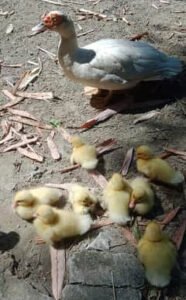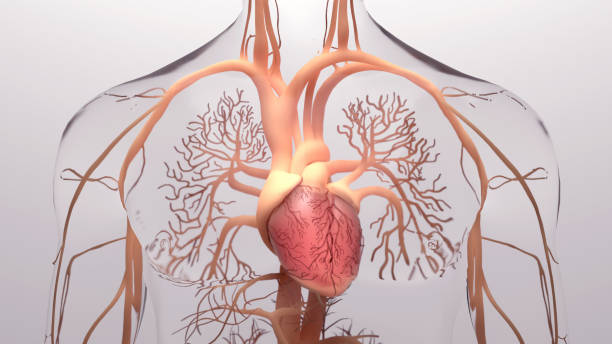Have you ever asked yourself what your body is made of? Well, we could understand this when we trace each level of biological organization from the smallest or basic particle up to the highest or most complex level. In this topic, we will talk about the level of biological organization which includes the nonliving particles that made the living exist particularly the basic unit of life or cell and its parts.
Levels of Biological Organization
The biological organization is a term used to describe the hierarchical way in which living things are grouped into ever-larger units. In its simplest form, the biological organization can be expressed by a pyramid structure which shows a progression from simple to complex.
The biological organization is a term used to describe the hierarchical way in which living things are grouped into ever-larger units. In its simplest form, the biological organization can be expressed by a pyramid structure which shows a progression from simple to complex.
The biological organization is a term used to describe the hierarchical way in which living things are grouped into ever-larger units. In its simplest form, the biological organization can be expressed by a pyramid structure which shows a progression from simple to complex.
Atom
An atom is the smallest particle of an element that has the chemical properties of that element. Atoms are made up of protons, neutrons, and electrons. The number of protons in an atom determines what element it is. For example, hydrogen has 1 proton and carbon has 6 protons. The number of neutrons in an atom can vary, but the number of electrons always equals the number of protons.
Molecule
Molecules are the smallest particle of a chemical compound that has the chemical properties of the compound. Molecules are made up of atoms, and atoms are the smallest particle of an element that has the chemical properties of that element.
Organelle
Organelles are the small structures inside a cell that carry out its specific functions. Each organelle has a specific job to do, and they work together to keep the cell alive. The most well-known organelles are the nucleus, mitochondria, and ribosomes.
Cell
A cell is the fundamental structure of all life. Cells are so small that you need a microscope to see them. Each cell has a membrane that separates the inside of the cell from the outside. The inside of the cell is filled with cytoplasm, which contains organelles like the nucleus, mitochondria, and ribosomes. Cells also contain DNA, which stores genetic information.
Tissue
Tissue is a type of material that is found in the body and has a specific function. There are four types of tissue in the body- epithelial, connective, muscle, and nerve. Epithelial tissue covers the outside of the body and lines organs and cavities inside of the body. It helps to protect against infection and acts as a barrier between different parts of the body. Connective tissue binds everything together and provides support for other tissues. It contains fibers that allow it to stretch, and it also stores energy in the form of fat. Muscle tissue is responsible for movement, and nerve tissue transmits signals between the brain and other parts of the body.
Organ
An organ is a collection of tissues that work together to carry out a specific function in the body. Organs are composed of two or more types of tissue and are usually enclosed in a membrane. Some organs, such as the heart and lungs, are hollow and contain one or more types of tissue. Others, such as the liver and pancreas, are solid.
Organ system
An organ system is a group of organs that work together to perform a specific task. For example, the digestive system consists of the stomach, small intestine, and large intestine. These organs work together to digest food. Another example is the respiratory system, which consists of the lungs and bronchi. These organs work together to oxygenate the blood.
Organism
The organism is a living thing that is made up of one or more cells. Cells are the basic units of life and each organism is made up of many cells. Organisms can be simple, like a single-celled bacterium, or complex, like a human being. An organism can be a plant or animal. Plants are organisms that can make their own food through photosynthesis. Animals are organisms that must eat other things to survive. Organisms can be small or large. The smallest organisms are called microorganisms and include bacteria and viruses. The largest organisms are called megafauna and include elephants and whales. There are many different types of organisms on Earth and they come in all shapes and sizes.

Population
The population is a measure of the number of organisms in a particular area. It can be used to describe the size of a bacterial culture, the number of animals in a zoo, or the number of people living in a city. Population size can be determined in two ways: by counting all the organisms or by estimating their abundance. In order to count all the organisms, you would need to sample every individual in the population. This is not always possible, so scientists often use methods like sampling or census to estimate population size.
Community
A community of organisms refers to a group of different species of organisms that interact with one another in a given area. The nature of the interactions can vary, from competition for resources to cooperation. These communities can be found in both terrestrial and aquatic habitats. The composition of a community can be affected by a number of factors, including the environment, the availability of resources, and the introduction or removal of species. In some cases, human activities can also play a role in shaping communities. For example, the introduction of non-native species can upset the equilibrium of an ecosystem.
Ecosystem
An ecosystem is a community of different species of living organisms and their physical environment. The term can refer to different scales, from microcosms to the entire Earth. Ecosystems are composed of populations of organisms and their abiotic (non-living) environment. The organisms in an ecosystem interact with each other and with their environment to produce flows of energy and matter.
Biome
A biome is a large, distinct ecosystem found on earth. The climate and geography of a biome determine the plants and animals that live there. Biomes include deserts, rainforests, tundra, and grasslands.
Biosphere
The biosphere is all of Earth’s ecosystems and the life that inhabits them. It’s made up of the hydrosphere, lithosphere, and atmosphere. The hydrosphere is water on and on Earth, the lithosphere is Earth’s solid outer layer, and the atmosphere is the gas layer that surrounds Earth. together, they make up our planet’s life-support system. The biosphere provides us with air, water, food, shelter, and other natural resources.


